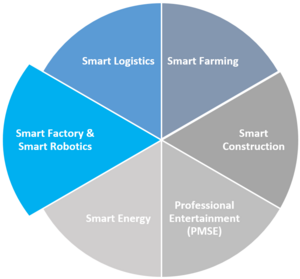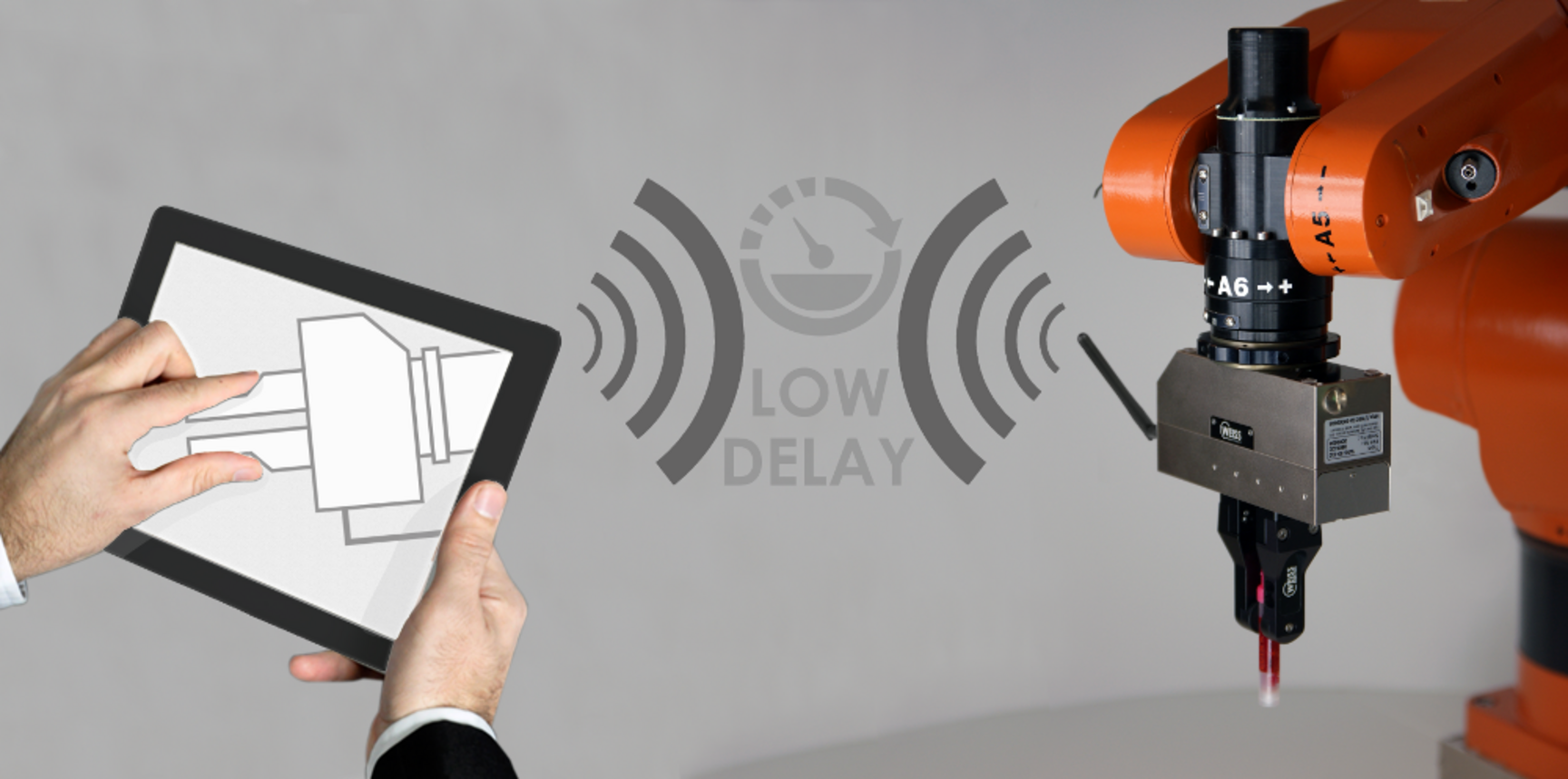The German Industrie 4.0 high-tech strategy started in 2011 to promote the next industrial revolution – the digitization and interconnection of machines, processes and workers in the industrial automation sector. Today, similar initiatives exist in a number of industrialized countries on an international level. The goal is to create smart factories where cyber-physical systems connect the real and virtual world. Smart machinery will communicate and collaborate in real-time over the Internet of Things (IoT) and enable intelligent human-machine interaction as well as a fully flexible and a highly efficient production.
The trend of digitization requires both companies and academia to innovate at a fast pace and to establish new platforms and standards which will also largely impact related industrial sectors such as logistics, construction, agriculture or professional entertainment.
In order to realize the digital factory and smart industries of the future, the integration of information and communication technologies (ICT) plays a pivotal role. One key component will be a new generation of wireless technologies and protocols – a research area where Fraunhofer HHI has leading expertise.
Industrial wireless technologies have to be enhanced to meet the latency and reliability requirements as well as safety and security standards that exist in automation and control systems, be it robotic networks and discrete manufacturing or process automation. The technologies will particularly benefit from the advancements of the 5th generation of mobile networks (5G). In this context, Fraunhofer HHI provides the following solutions:
- Channel modeling for different environments in wireless industrial automation
- Concepts and algorithms for ultra-reliable and low-latency communication (URRLC) & prototyping of real-time capable software-definable radios
- Application-driven cross-layer optimization of communication layers
- Enhanced Multi-RAT architectures
- Intelligent localization, networking and self-optimization over modular wireless infrastructures
- Energy-efficient data transmission for wireless machine-type communications
- Data analytics, machine learning and prediction in industrial wireless sensor and actuator networks
- Network planning and optimization for digital factories
Related topics
![[Translate to English:] Low Latency](/fileadmin/_processed_/d/3/csm_iStock-489599728_Low_Latency_79974b0180.jpg)
Low Latency
Low-latency transmission over the wireless communication links is a major requirement to enable emerging use cases and future applications.
Click here, to read more about 'Low Latency'
In September 2015, the ITU-R proposed its vision for IMT for 2020 and beyond including low-latency. Also standardization bodies like 3GPP provided a feasibility study on new services. Among other things, the following use cases where mentioned: virtual presence, industrial control, tactile Internet, connected vehicles, industrial factory automation and bio-connectivity. In fact, wireless systems enabling low-latencies will be essential for a wide range of future applications.
Such applications will demand for end-to-end latency of a few milliseconds and even below. To meet these challenges, especially the physical layer and the medium access layer of wireless communication systems have to be enhanced. In particular, the digital signal processing time has to be reduced and the frame structure has to be adopted for low-latency packets.
The Fraunhofer Heinrich Hertz Institute provides solutions that enhance the physical and medium access layer to support low-latency transmission, addressing 5G in general and dedicated use cases in specific. In particular, we provide solutions for waveform and frame structure design of the wireless signal, and we develop protocols that are adapted to the characteristics of the wireless channel. In addition, we can use our own software defined radio platform to verify newly developed mechanisms and protocols.
![[Translate to English:] Reliable Comm](/fileadmin/_processed_/5/8/csm_iStock-653137006_Reliable_Comm_5a88ea0162.jpg)
Reliable Communications
A key component for the deployment of wireless communication in critical systems is ultra-high reliability.
Click here, to read more about 'Reliable Communications'
In scenarios like industrial factory automation and emergency systems, guaranteed error rates below 10⁻⁹ are discussed, which is not feasible with current wireless communication standards. For many future applications, the demand for ultra-reliability wireless communication is expected to increase, since often the installation of wires (which come along with high installation and maintenance cost and downtime due to the wear and tear) is not feasible.
The Fraunhofer Heinrich Hertz Institute develops and evaluates ultra-reliable and robust wireless communication schemes for different applications, from industrial wireless to vehicular communications, thereby addressing 5G in general, and dedicated use cases in specific. A major technique to achieve highly reliable communication is harnessing diversity, especially given the high dynamics of the wireless channels. Novel communication paradigms, such as multi-connectivity, and cognitive components help to provide high reliability even at high mobility. Our software defined radio platform is a central component to verify newly developed schemes under realistic conditions.

